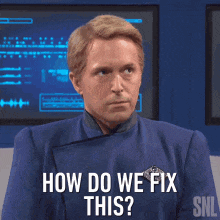Decentralized Applications (DApps) and the entirety of Web 3.0 promises to be the future for all things and everything. The new data handling and interoperability approach dawned on us with much to think about and more to do. But unlike its predecessor, Web 2.0, which saw light in the early 2000s, this new trend faces a unique problem; the problem of high expectations.
Note: I will be using the terms “Web 3.0” and “Web 2.0“ to refer to decentralized and centralized applications respectively, all through this article.
When Web 2.0 initially launched, nobody knew what to expect. They were no rules or standards set for this new technology. It’s hard to complain about the quality of a product when you haven’t experienced any other version elsewhere, and nobody cared. The talk was about the prospects of an internet where ordinary people could openly share their thoughts and interact across borders like never before.
As expected, the case isn’t so with Web 3.0. Standards have been set, and the people now know what they want. Navigating most DApps as they are today, it’s pretty evident just how unpleasant the experience is, especially for someone with no technical background.
The current status quo for software interfaces is modern, rich, and colourful, with eye-catching visuals that convey precise information to the user.
But right now, all we are getting are pages that look like this 👇

Ok, maybe this is a little exaggerated, but you get the point. There’s a menacing plague of lousy user experience in Web 3.0 and it’s stifling all the potential growth that should be happening.
The Reason For Bad UX
Ideally, excellent User Experience (UX) suggests more than design interfaces. It's a hassle both front-end developers, back-end developers, and UI designers have to tackle.
Consider the process of using most Defi wallets. Having to save and input a 24-word phrase every time you log out is not attractive to new users. That isn't good UX.
Bridging assets between different Blockchains proves to be an unnecessarily complex activity that absolutely no one would enjoy. That isn't good UX. Considering the number of Layer 2s operating, the need for interoperability without the price of good UX is absolutely undebatable.
If Web 3.0 hopes to scale to mainstream adoption, some of these cumbersome onboarding systems must change. Some would argue;
“You don't comprehend the technology well enough; it's completely different.”
“Why should you employ old methods to create something new? It makes little sense for Web 3.0 pioneers to look to Web 2.0 approaches.”
When you consider it, none of these arguments is valid.
Technological advancement aims to better our perspective and approach to challenges, but this can only be accomplished by learning from past errors and successes and applying what we've learned to new endeavours. It’s absurd to take everything learned about UX in the past decade and throw it out the window.
Reinventing UX comes at the cost of losing the interest of many potential users. There are several examples of companies that have suffered significant losses due to poor UX.

it’s more about what they want than it is about what you want to give them. - Noble Okafor
Web 3.0 was made for everyone to participate. It’s supposed to better everyone's internet experience, not just the geeks and techies. It’s no good if no one but them can successfully operate on it.
The Solution For Good UX

Right now, companies are obsessed with following their set road map to the launch of their projects, aiming to be the next big thing, and thinking little of just how practical whatever they are building is to the average user.
Some of these projects fail while others scale excellently but regardless of the outcome, there are always enough venture capitalists willing to fund more ideas if the first crashes.
These companies know this and know that their failure is certainly not because any other projects have better UX than they do. So offering solutions to problems that don’t seemingly affect them does very little to prove your point.
Sadly, Web 3.0 must go through several severe hiccups before truly realizing good UX. But when the hiccups do come, here are a couple of solutions. Some are already being explored by prominent companies, which I would mention.
Building DApps that integrate with our everyday lives should be a priority. The potential of Web 3.0 spans farther than Defi and It would be easier to understand the need for better UX when developers begin to create DApps that work with our daily lives. Celo makes this a crucial part of their mission.
UI/UX designers need to understand the complexities of Web 3.0 to be able to design better interfaces for interaction.
Interoperability between blockchains is critical for scaling. The sharing of data and value between separate blockchains should be seamless and fast. See how Fund Movr is contributing to making this possible.
Adopting open-source projects would go a long way toward achieving this reality of good UX for Web 3.0. The community trust and input matter if you intend on giving them the best experience possible.
Try, fail, and try again!
Conclusion
The solutions listed above aren't a fix-it recipe for all of the issues that Web 3.0 will face or is currently facing. Even with the hype around, it will take a long time before everything starts to make perfect sense to everyone.
However, these solutions will create an internet community where everyone is actively involved and not just on the sidelines waiting for the bubble to burst. The key to actual scaling is unquestionably a great user experience for everybody.
As I said, Web 3.0 leaves us with much to think about and even more to do. But as the early internet underwent metamorphoses, so will the Decentralized Web.

